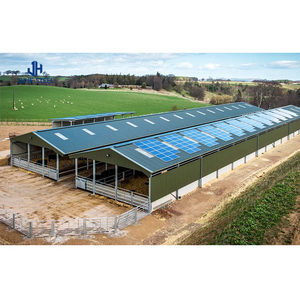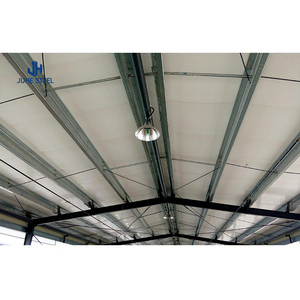Introduction to Elevated Chicken House
In the realm of backyard farming and sustainable living, an elevated chicken house stands out as a smart and practical solution for poultry enthusiasts. Elevating the chicken house not only provides better protection from predators and harsh weather conditions but also enhances the overall health and productivity of your flock. This guide will explore the different types of elevated chicken houses, their features, applications, and the reason they are a beneficial choice for both novice and experienced poultry keepers.
Types of Elevated Chicken Houses
There are several designs available in elevated chicken houses, each catering to different needs. Understanding these types will help you select the most suitable option for your backyard or farm.
- Portable Elevated Chicken Houses: These are lightweight structures that can be moved easily to fresh ground, providing chickens with a continual supply of fresh grass and bugs.
- Fixed Elevated Chicken Coops: These are permanently placed structures often built with more robust materials that offer added durability against elements and pests.
- Integrated Elevated Chicken Houses: Combining a coop with run space, this type is ideal for those seeking maximum space efficiency, allowing chickens to roam and forage safely.
- DIY Elevated Chicken Coops: For the hands-on enthusiast, constructing your own elevated chicken house can be rewarding and is often tailored to fit specific yard dimensions and personal preference.
Function, Feature and Design of Elevated Chicken Houses
The design and functionality of an elevated chicken house center around the health and security of your poultry. Here’s what makes them a reliable choice:
- Height Advantage: Elevation minimizes the risk of predator attacks while providing better airflow, reducing moisture buildup.
- Easy Cleaning: The raised structure allows for easier access to the nesting boxes and bedding, simplifying the cleaning process and promoting better hygiene.
- Weather Protection: An elevated design safeguards chickens from heavy rain and snow, ensuring they stay dry and healthy.
- Nesting Boxes and Roosting Bars: Clever design features like strategically placed nesting boxes and roosting spaces enhance the comfort of your birds, encouraging natural behaviors.
Applications and Advantages of Elevated Chicken Houses
The versatile design of an elevated chicken house caters to various applications, both for everyday use and long-term benefits. Here are some notable advantages:
- Enhanced Poultry Health: The elevation allows for better drainage and ventilation, ultimately leading to healthier chickens.
- Pest Control: Raised houses discourage pests such as rodents and snakes from accessing the coop, providing an extra layer of protection for your flock.
- Improved Egg Production: A stress-free and comfortable environment encourages laying performance, which can lead to a more consistent supply of fresh eggs.
- Space Efficiency: Especially in urban settings, an elevated chicken house occupies less ground space, allowing for greater flexibility in property layout.
How to Choose the Right Elevated Chicken House
Selecting the perfect elevated chicken house requires consideration of specific factors that will cater to your unique needs and the environment. Here are some tips:
- Size Flexibility: Match the size of the chicken house with the number of chickens you plan to keep, ensuring adequate living space.
- Material Durability: Opt for weather-resistant materials such as treated wood or metal that can withstand various outdoor conditions.
- Amenities: Look for features like ventilation windows, access doors, and easy-to-clean interiors that make daily management simpler.
- Local Regulations: Investigate local zoning laws or farm regulations to ensure your elevated chicken house complies with restrictions.

































